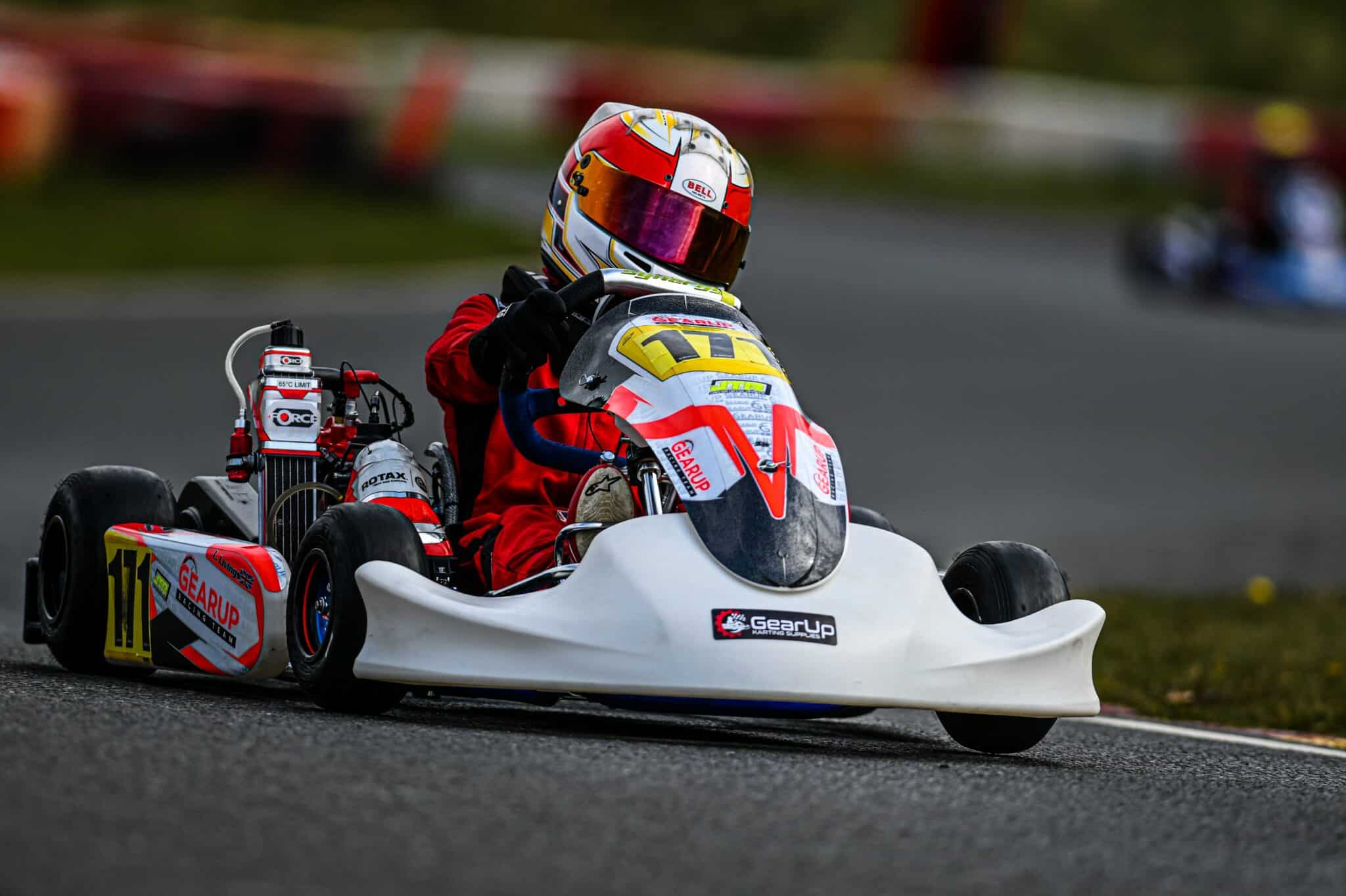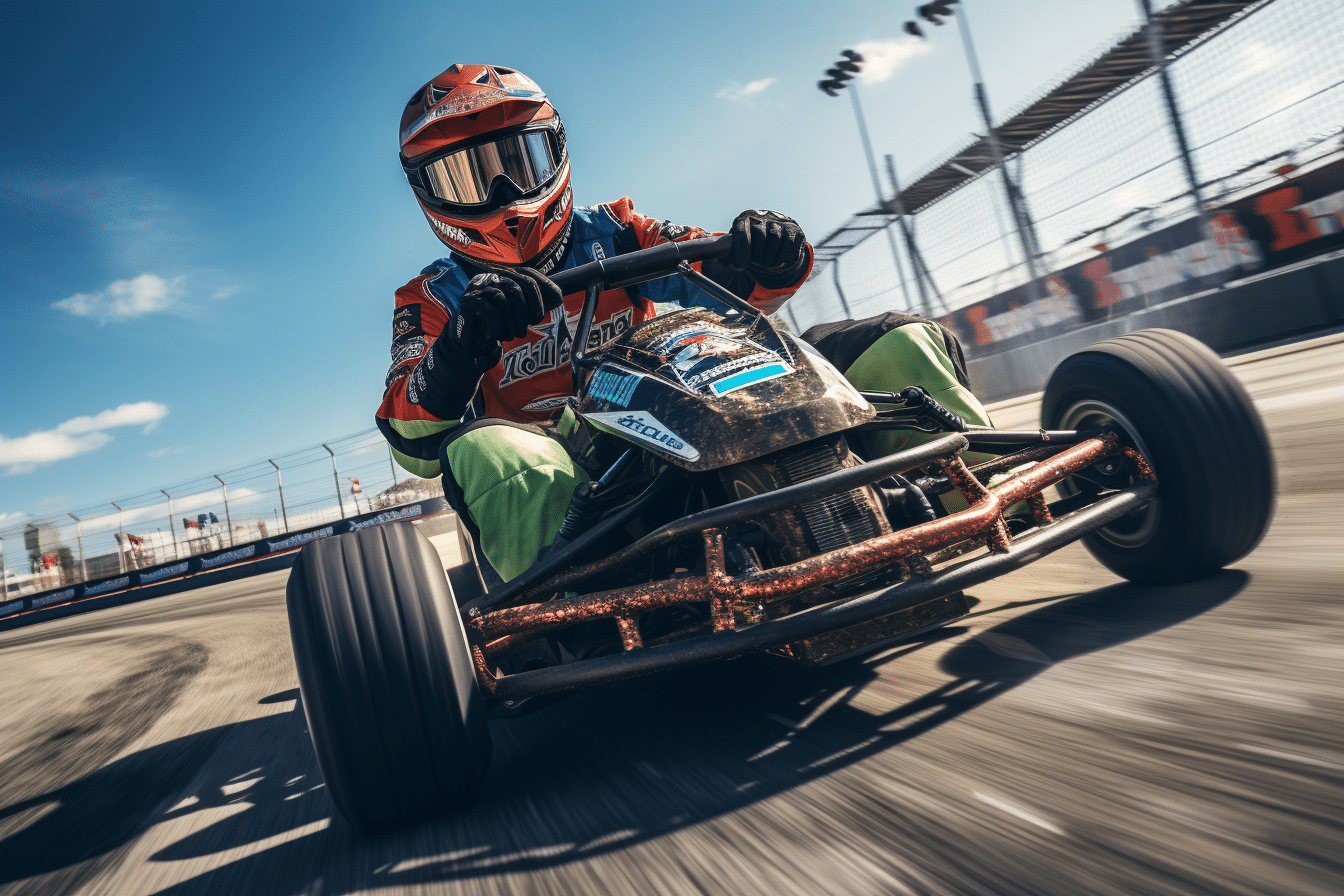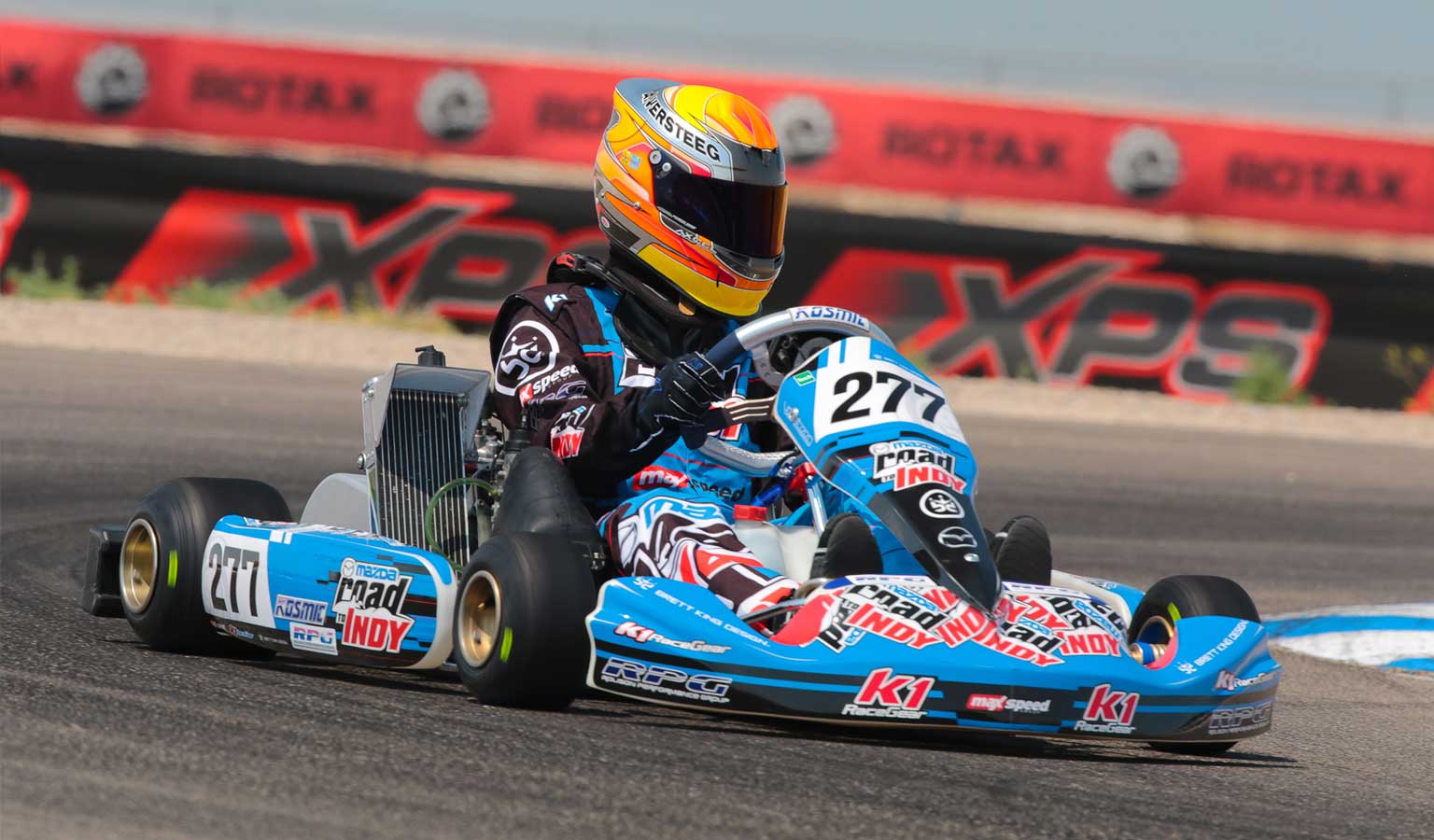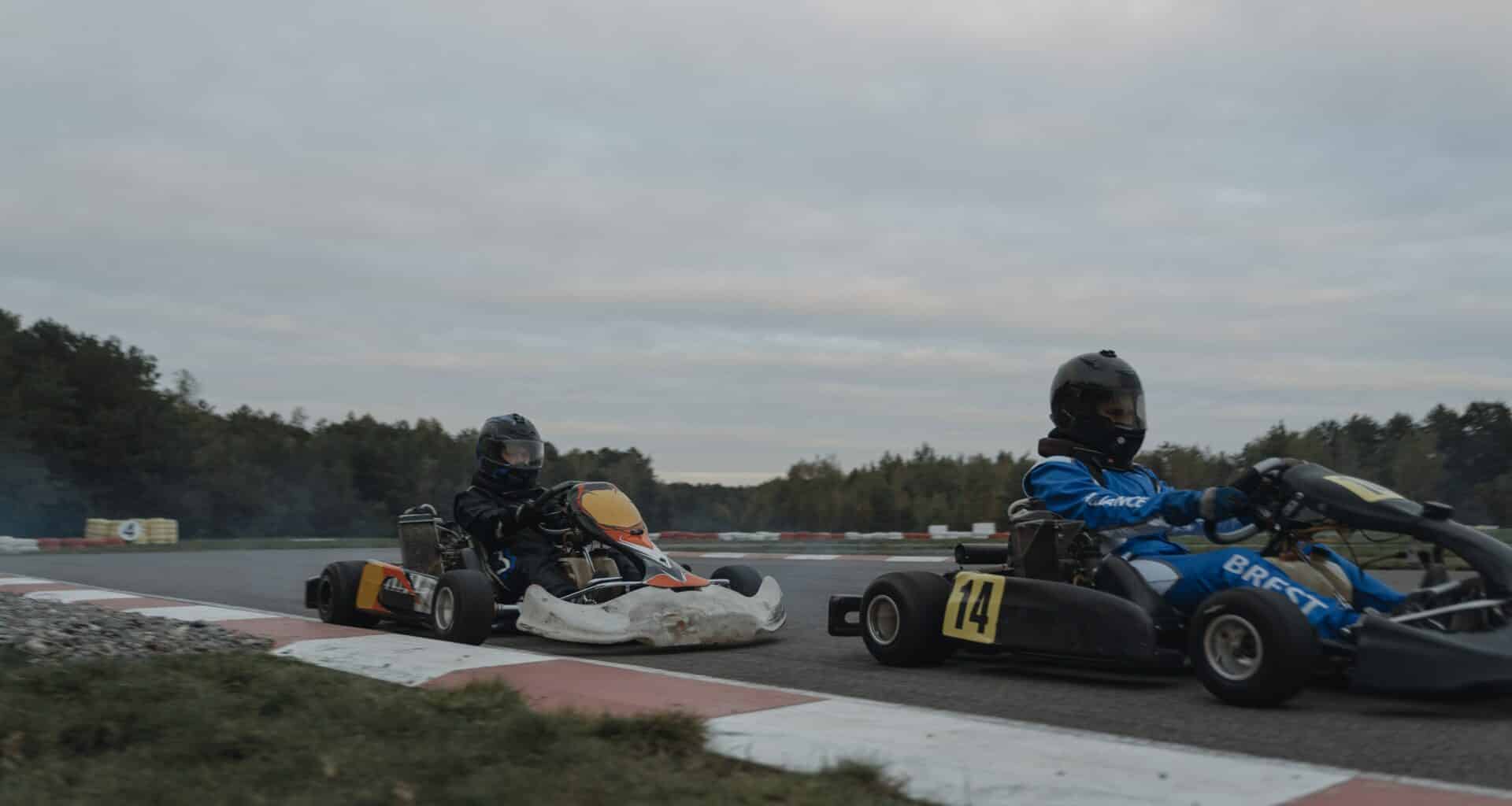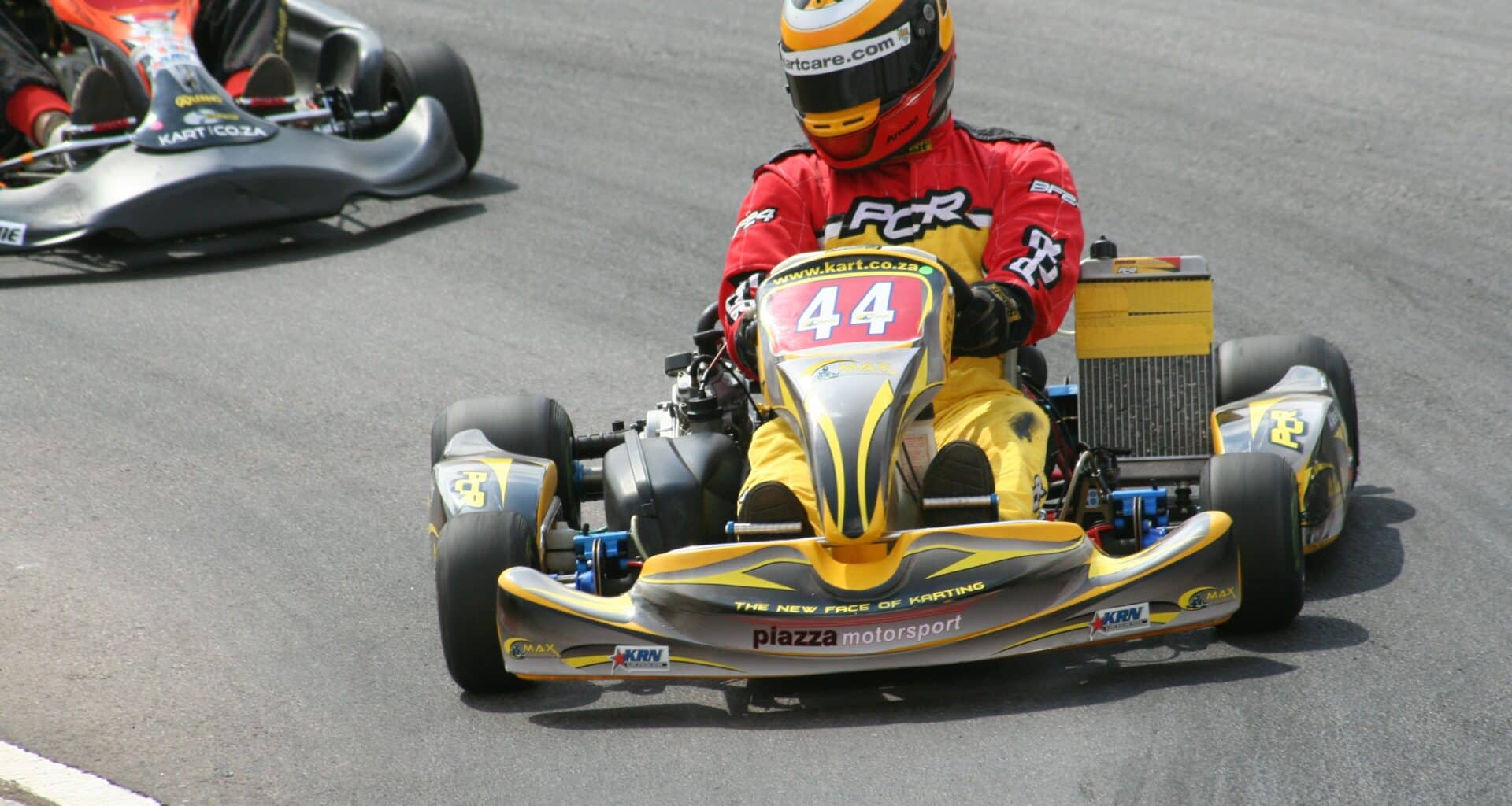Go-karts are designed with a low center of gravity to hug the ground for better control and stability. However, Newton’s laws of motion dictate that objects in motion tend to stay in motion.
When driving at high speeds around tight corners or colliding with other karts or objects on the track, the momentum can easily cause a kart to flip over.
According to Newton’s first law, a go-kart in motion will continue moving in the same direction unless acted on by an external force.
When taking a turn, the kart’s momentum wants to continue forward rather than follow the curve. This force has to be counteracted by the downward force of gravity and friction of the tires on the track. If the momentum is too great, the kart can lift and roll.
Newton’s third law states that for every action there is an equal and opposite reaction. During collisions, the impact force can send one or both karts spinning out of control.
The sudden change in momentum exerts a torque that can flip a kart up vertically or laterally.
Understanding these physics principles helps explain how go-karts can and do flip over in certain conditions.
Table of Contents
- 1 Factors That Can Lead to a Go-Kart Flipping
- 2 Real Life Situations of Go-Kart Flip Overs
- 3 Risks and Dangers of a Flipping Go-Kart
- 4 How Design and Security Features Differ Among Go-Karts
- 5 Preventive Measures for Evading Go-Kart Flips
- 6 Essential Safety Gear and Their Role
- 7 Is It Really Possible to Flip a Go-Kart?
- 8 Frequently Asked Questions About Karting Safety
- 9 Conclusion: Ensuring Safety in Go-Kart Racing
Factors That Can Lead to a Go-Kart Flipping
There are a variety of factors that can cause a go-kart to become airborne and flip over. Here are some of the most common:
- Taking turns at high speeds – Centrifugal force can lift the inside tires off the ground.
- Collisions with other karts – Side impacts can impart significant lateral torque.
- Uneven track surfaces – Curbs, bumps, or debris can launch karts upward.
- Mechanical failures – Broken axles, tie rods or loose wheels can lead to loss of control.
- Driver errors – Overcorrection, unsafe passing, or inexperience can result in rollovers.
Go-karts are designed for speed and thrills. Without proper caution, what goes up can certainly come down…upside down. Drivers must be aware of the risks and drive defensively to avoid potential flip over accidents.
Real Life Situations of Go-Kart Flip Overs

Analysis of Past Incidents
There are numerous real world examples of go-karts flipping over during races and recreational driving sessions. Analyzing video footage and first hand accounts of these incidents reveals common themes:
- Sideswiping another kart causing loss of control.
- Clipping wheels together resulting in a spinning, flipping kart.
- Launching over curbs, tire walls, or debris on the track.
- Rolling after colliding head on with barriers or other karts.
It is apparent from these flipped kart scenarios that impacts, loss of traction, and launching are major contributing factors. This confirms our physics analysis of how sufficient torque and forces can overcome gravity and stability.
Risks and Dangers of a Flipping Go-Kart

Physical Injuries
A go-kart rollover exposes the driver to serious physical harm. The open chassis provides little protection as unrestrained bodies are thrown about violently. Common injuries include:
- Head and neck trauma from impacting the ground.
- Broken bones in the arms, legs, and back from flailing limps.
- Severed digits from hands caught outside the kart.
- Internal organ damage from the safety harness under high G-forces.
- Abrasions and lacerations from skidding on the rough track surface.
These types of blunt force and penetrating wounds require immediate emergency medical attention. Quick action can mean the difference between life and death.
Psychological Trauma
In addition to physical harm, flipping go-kart accidents can also inflict severe psychological damage. Getting rolled and tossed violently can be an extremely traumatic experience. Common mental impacts include:
- Phobias related to go-karting and driving.
- Heightened anxiety due to a loss of perceived control.
- Post-traumatic stress induced by memories of the crash.
- Depression stemming from sustained injuries and time off from school/work.
- Loss of independence if unable to drive due to trauma.
Mental health support and counseling are often needed to overcome the emotional scars left by a harsh karting spill. Time, understanding, and professional help facilitate the healing process.
How Design and Security Features Differ Among Go-Karts
Role of Safety Harnesses in Go-Karts
The safety harness system is critical for keeping drivers secured inside a kart during rollovers and collisions. However, harnesses vary considerably by design and quality.
Advanced harnesses found in racing karts integrate anti-submarine straps to prevent the lap belt from riding up. They also utilize camlock buckles for quick release. Cheaper recreational go-karts often lack robust harness systems increasing ejection risks.
Impact of Go-Kart Chassis Design in Flipping Scenarios
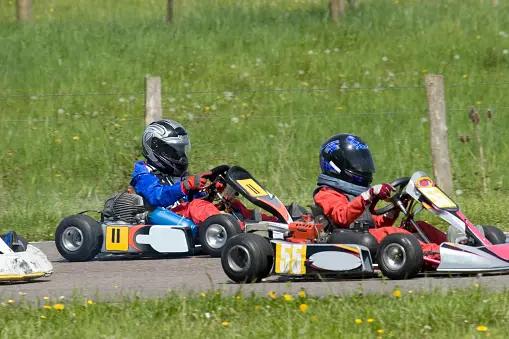
Chassis construction plays a key role in how a kart holds up during a crash. Racing karts utilize higher quality materials like chromoly steel in a four point roll cage design. The cage channels impact energy to protect the driver compartment.
Conversely, commercial karts may only have a simple perimeter frame. Some are even open without doors using basic bolted connections. Structural weaknesses increase the likelihood of collapse and intrusion during flip overs.
Preventive Measures for Evading Go-Kart Flips
Importance of Regular Maintenance of Go-Karts
Routine inspection and maintenance of go-karts is vital for safety. All structural components and mechanisms should be checked for integrity. Special attention should be paid to:
- Frame welding for any cracks or fatigue.
- Bolts securing wheels, hubs, and control arms for tightness.
- Tires for sufficient tread depth and proper pressure.
- Brake pads and rotors for wear and effectiveness.
Performing scheduled service and repairs drastically reduces equipment failures that can initiate crashes and rollovers.
The Need to Drive Responsibly and Adhere to Safety Standards
Driver awareness, training, and prudent decision making is the best defense against go-kart rollovers. Key safe driving practices include:
- Obeying speed limits, traffic laws, and staff guidance.
- Being aware of surroundings and not driving distracted.
- Braking before turns and corners, not trail braking through them.
- Maintaining safe spacing between karts.
- Avoiding overly aggressive driving and bumping.
Following the rules of the road and exercising common sense goes a long way in preventing flip inducing go-kart crashes.
Essential Safety Gear and Their Role
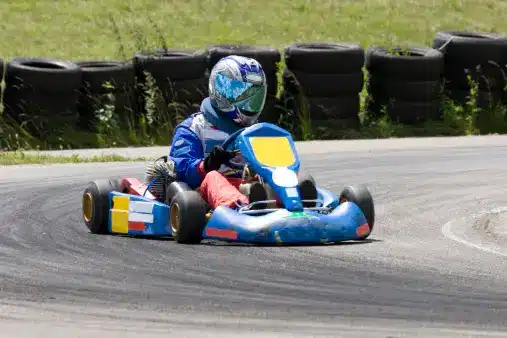
Protective Helmets
Helmets are critical for defending against traumatic brain injuries common in rollovers. Only helmets meeting DOT FMVSS 218 motorcycle standards provide adequate impact absorption. Full coverage visors protect face and head from abrasions.
Racing Suits
One and two piece suits made of abrasion resistant materials like leather and Kevlar shield skin from rashing when skidding over asphalt. Thick material reduces road rash severity and cuts down recovery time.
Is It Really Possible to Flip a Go-Kart?
Absolutely. Go-karts can and do flip over in real world racing and recreational driving scenarios. While their low center of gravity improves stability, it is not a guarantee against rollovers. Numerous factors including collisions, curbs, and driver errors can generate sufficient force to overcome gravity and inertia keeping tires down.
Race footage clearly captures karts launching several feet in the air and rolling over after impacts with karts, barriers, and track surfaces. The open chassis provides little protection once airborne and overturned, frequently resulting in significant injuries. Understanding the risks, wearing safety gear, and driving defensively is key.
Frequently Asked Questions About Karting Safety
Is It Safe for Children to Drive Go-Karts?
Child safety depends heavily on kart speed and structure. Slow electric kiddie karts with small tires pose minimal risk. However, faster gas karts can become dangerous projectiles if drivers lack maturity and experience. Most tracks enforce minimum age and height requirements for different kart types.
What to Do in Case of a Go-Kart Flip?
If witnessing a kart flip, call for medical help immediately. Check that the scene is safe before approaching and only move the driver if critical to avoid further harm. Keep them calm and still until paramedics arrive. Provide any details on the incident you can recall. Follow staff guidance throughout.
Conclusion: Ensuring Safety in Go-Kart Racing
Go-karts rollovers are serious accidents but ones that can be avoided. Seek out well maintained karts with robust chassis and harness systems. Adhere to all track rules and master control through training. Defensive driving, quality safety gear, and sound judgement are instrumental in staying rubber side down. With proper precautions, the thrills of karting can be enjoyed responsibly.
